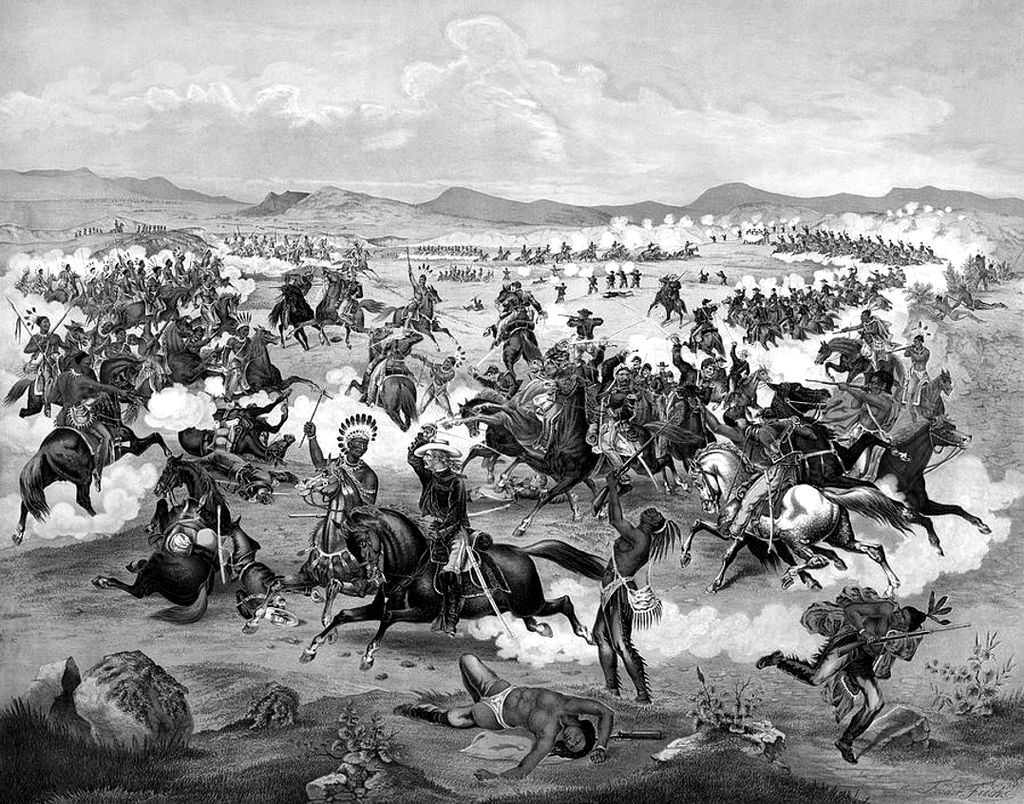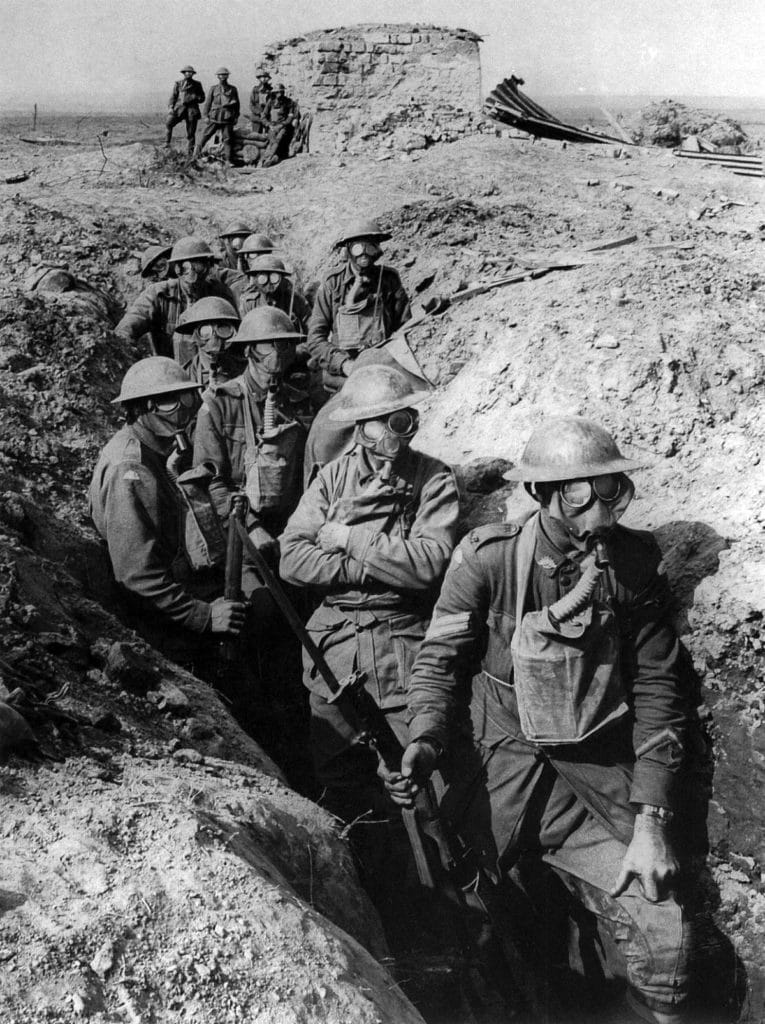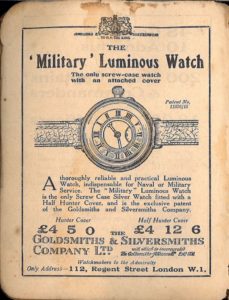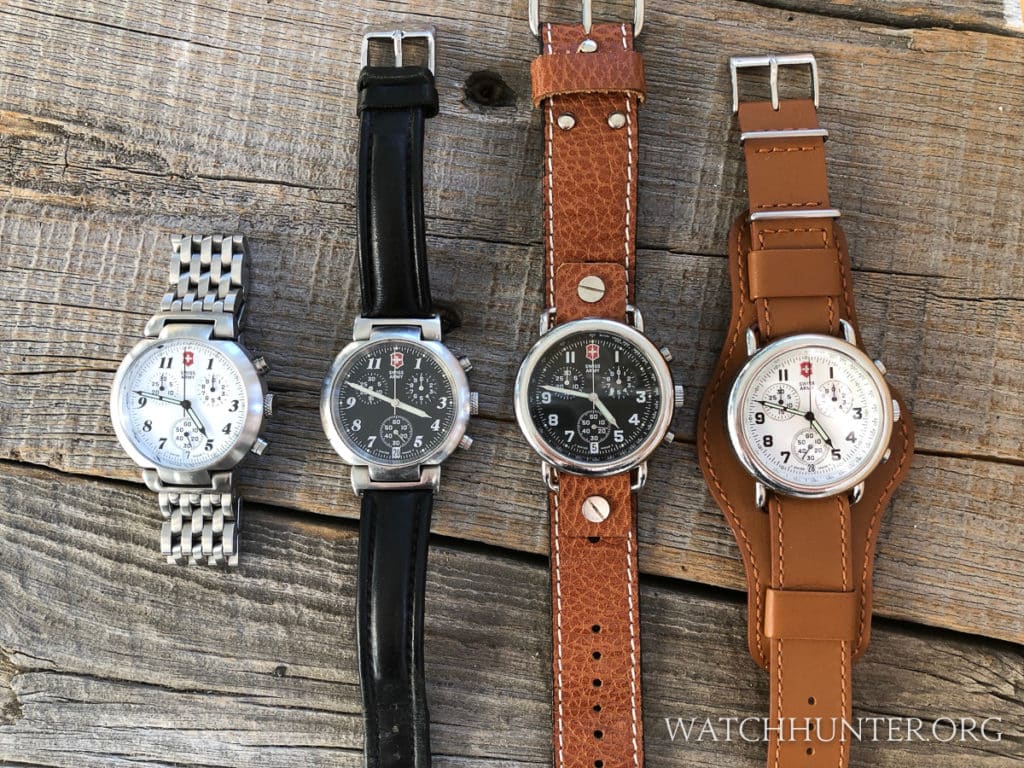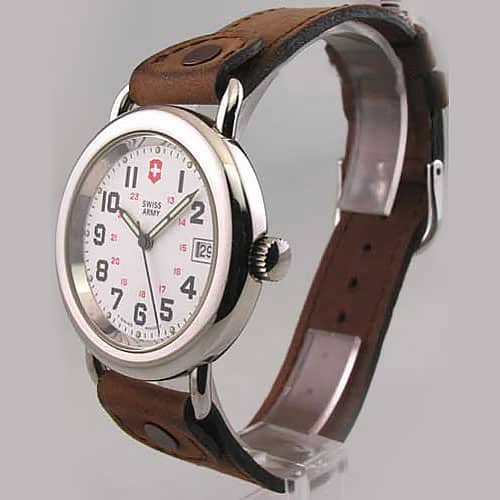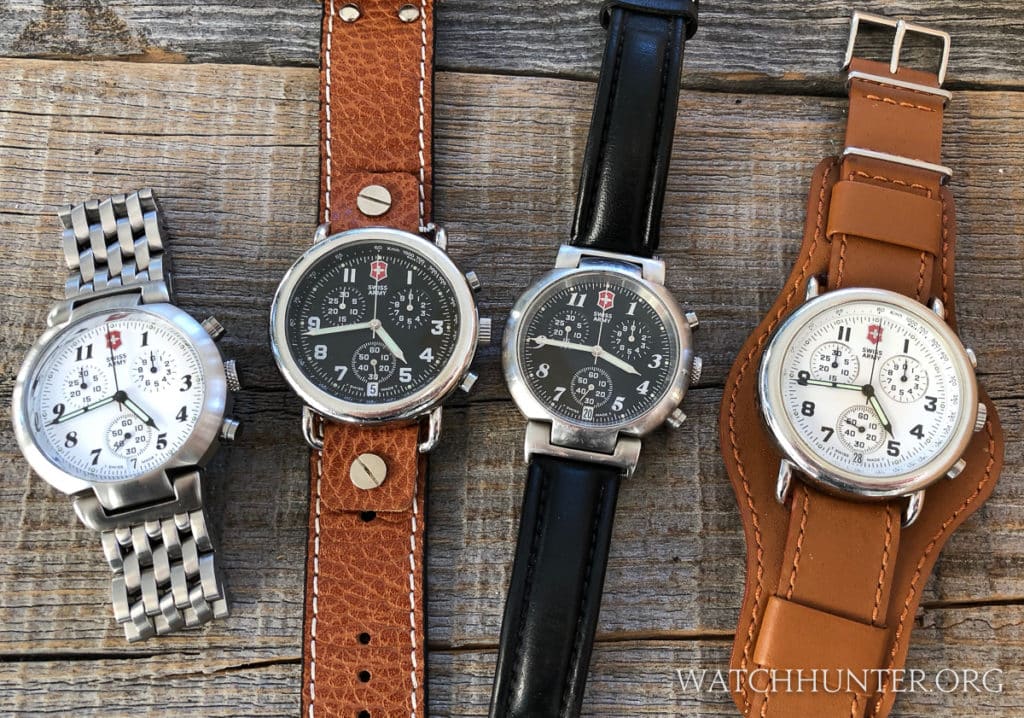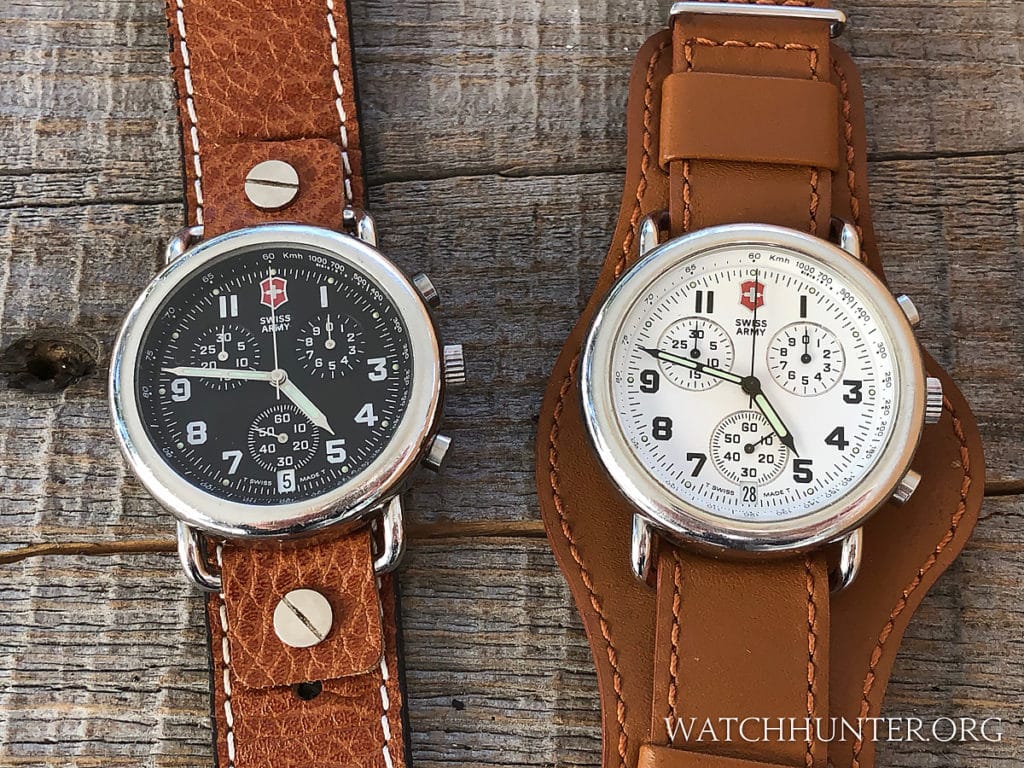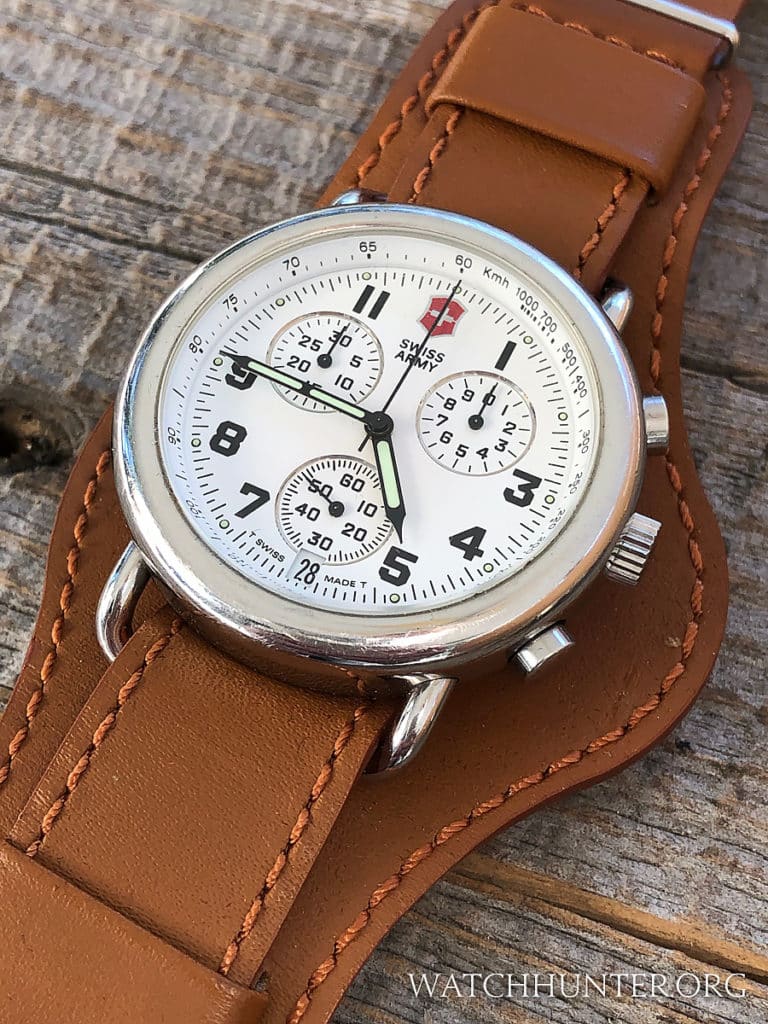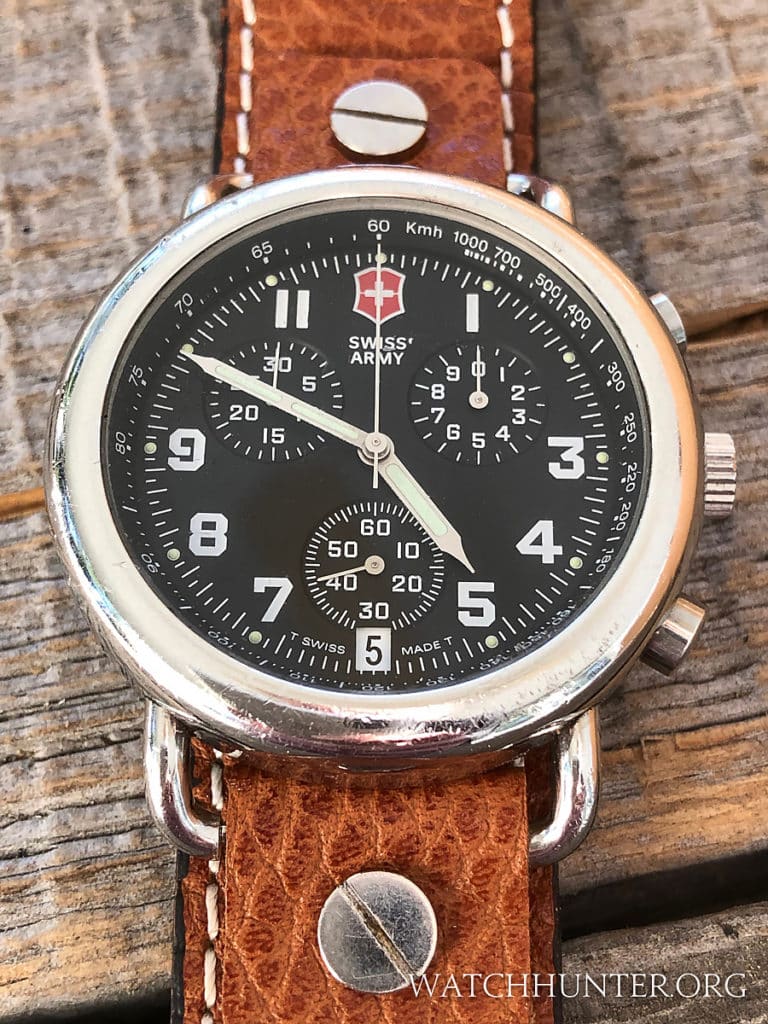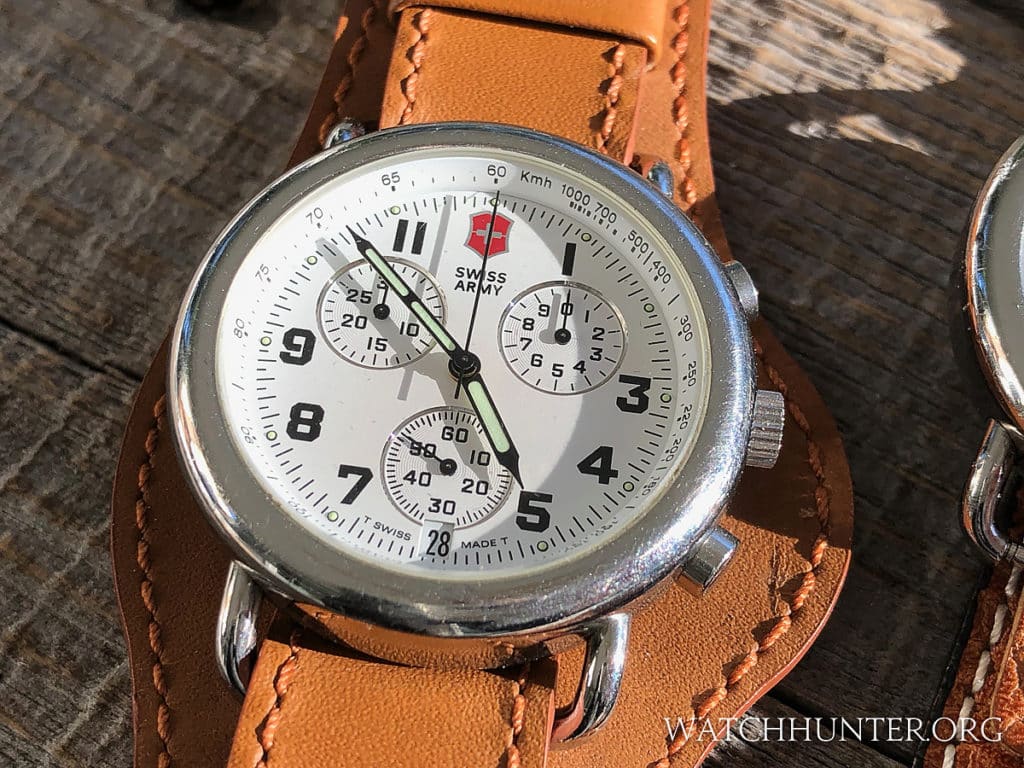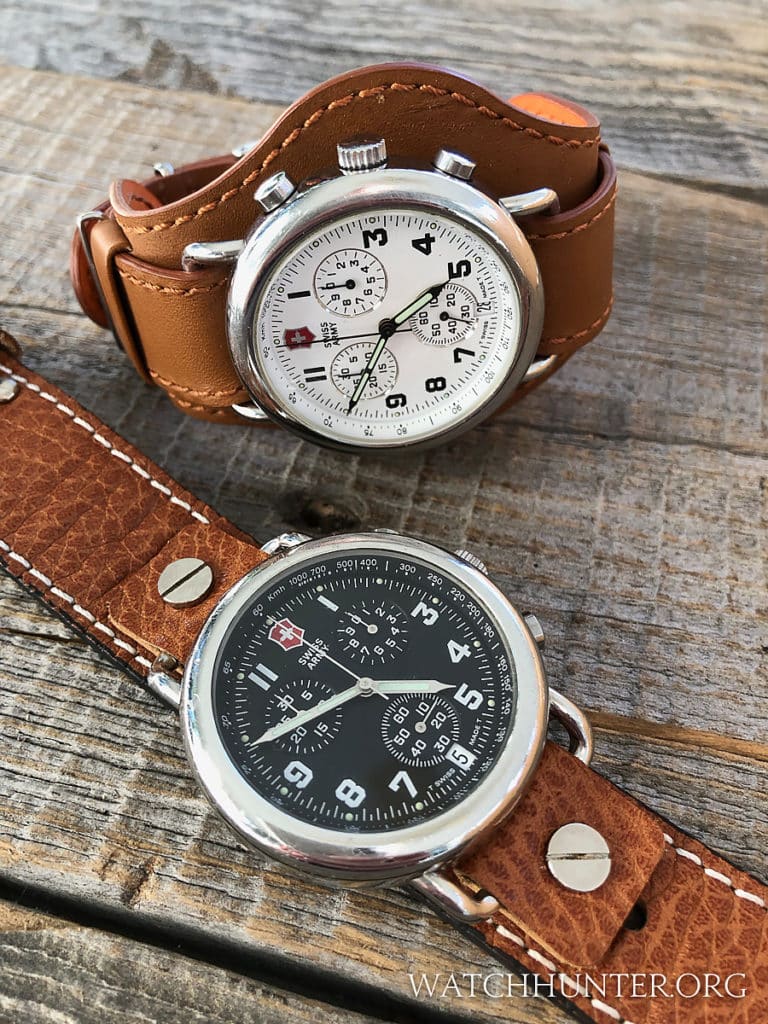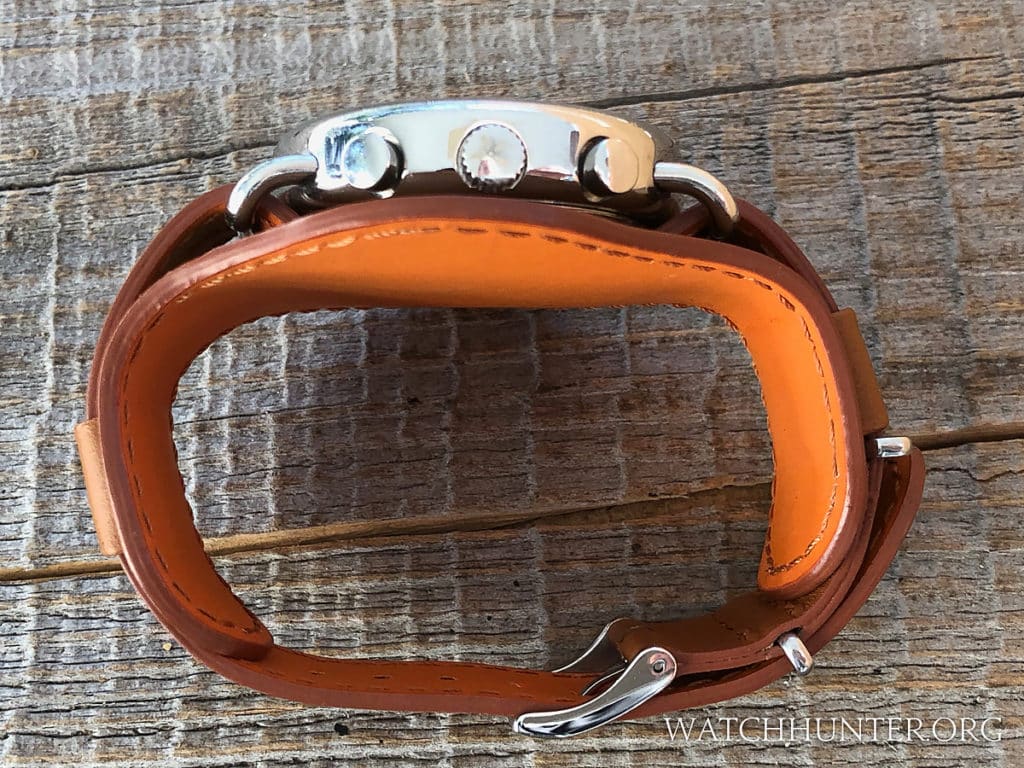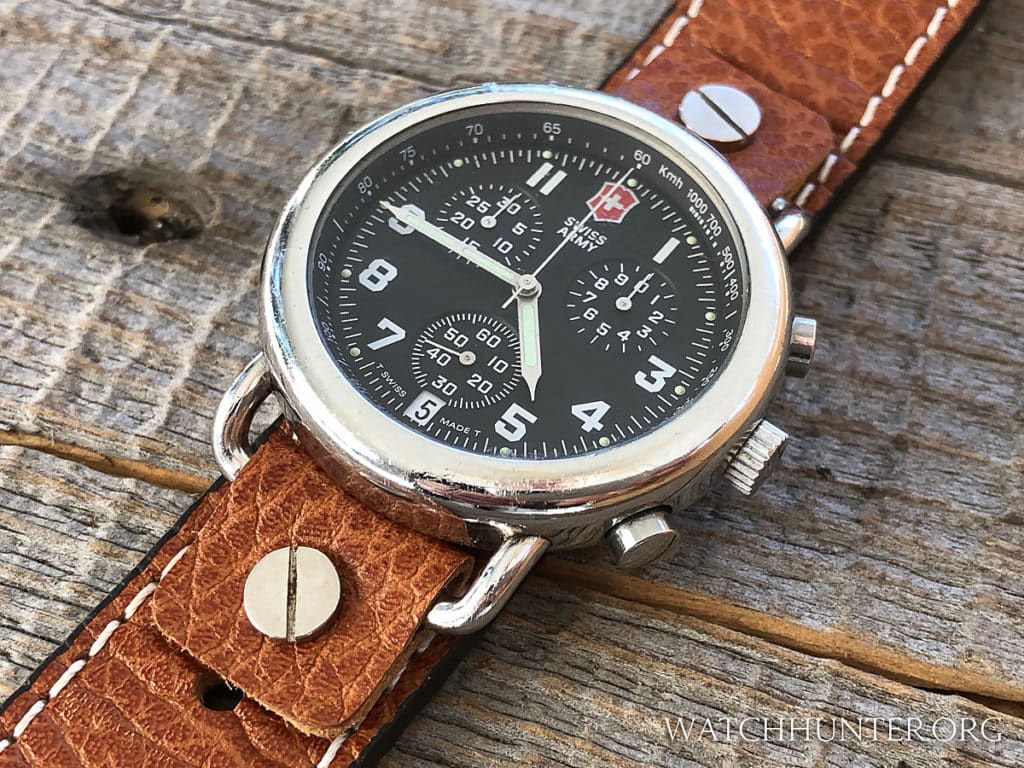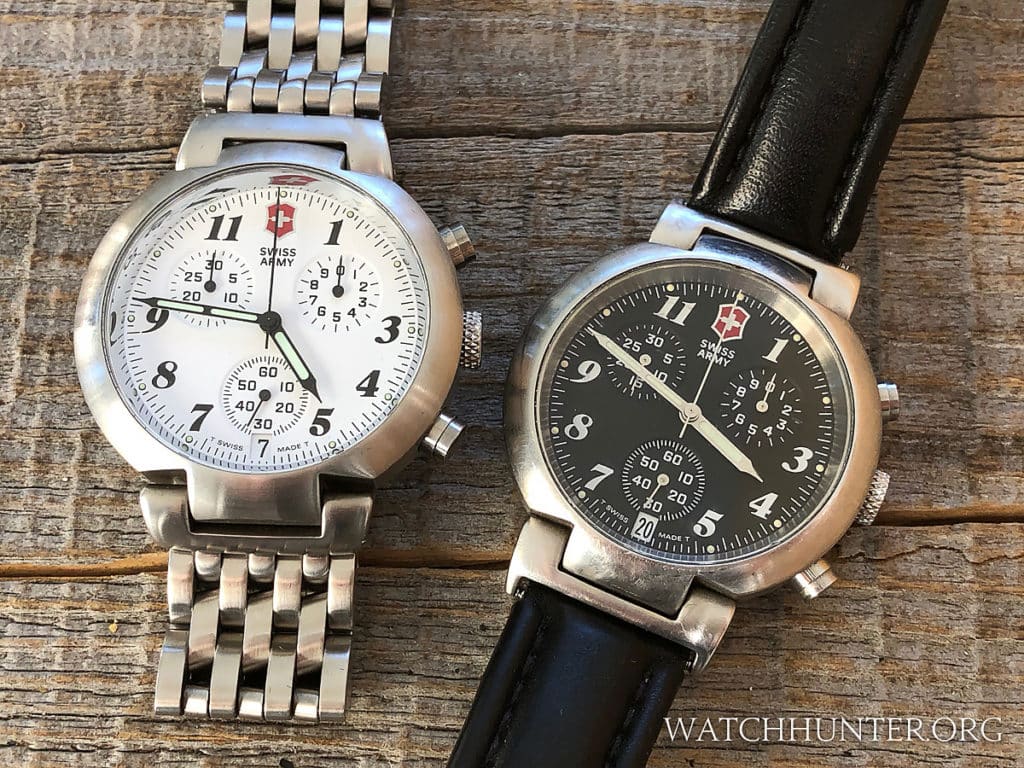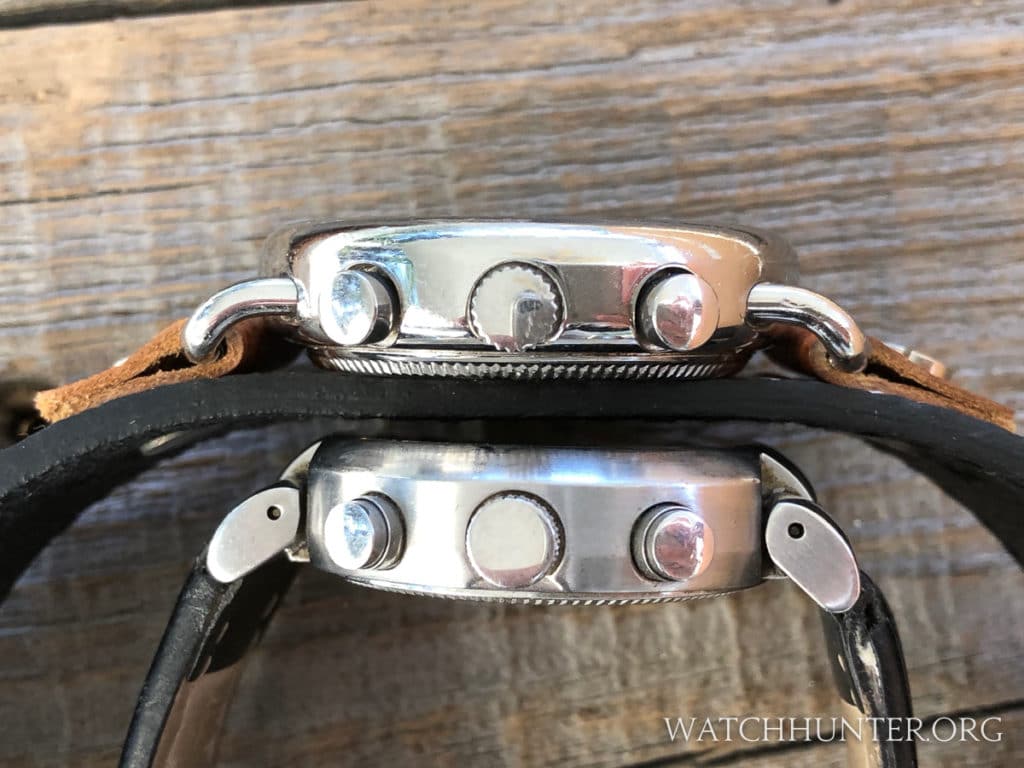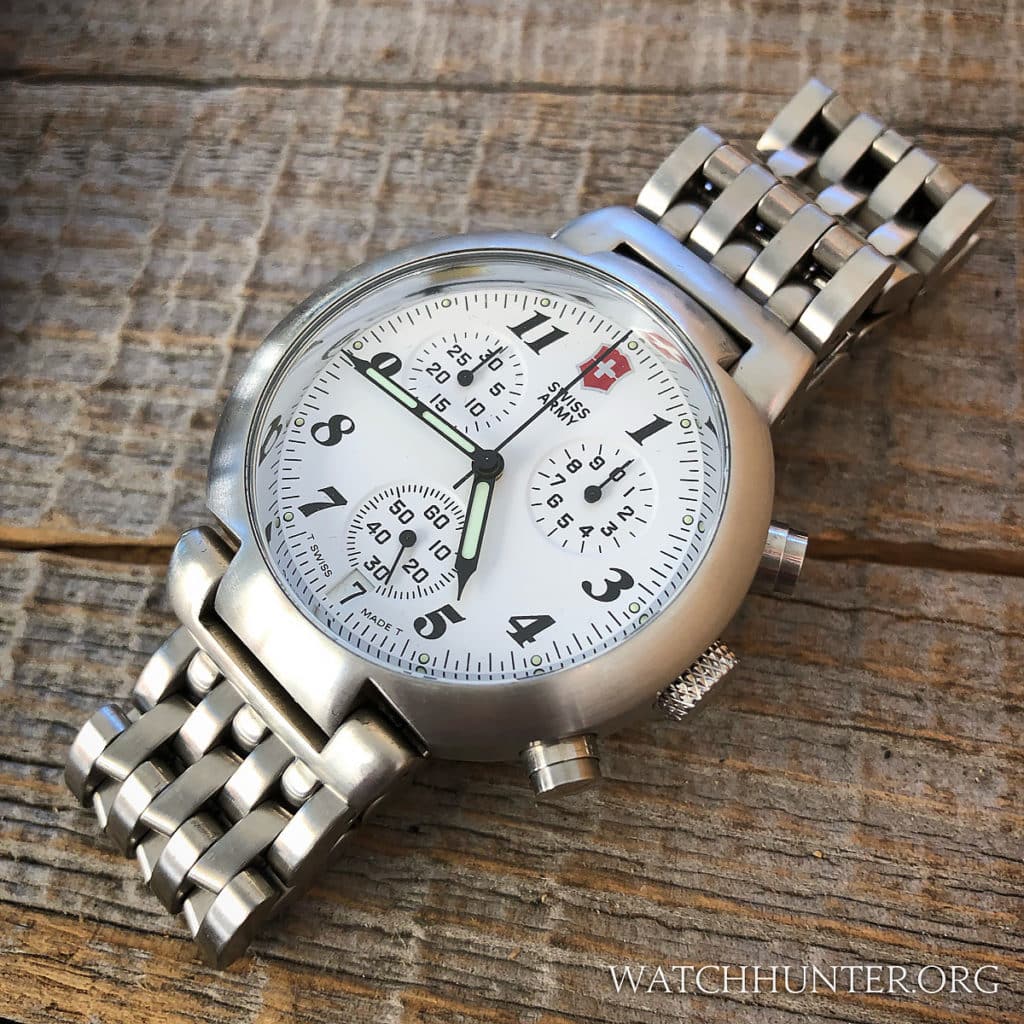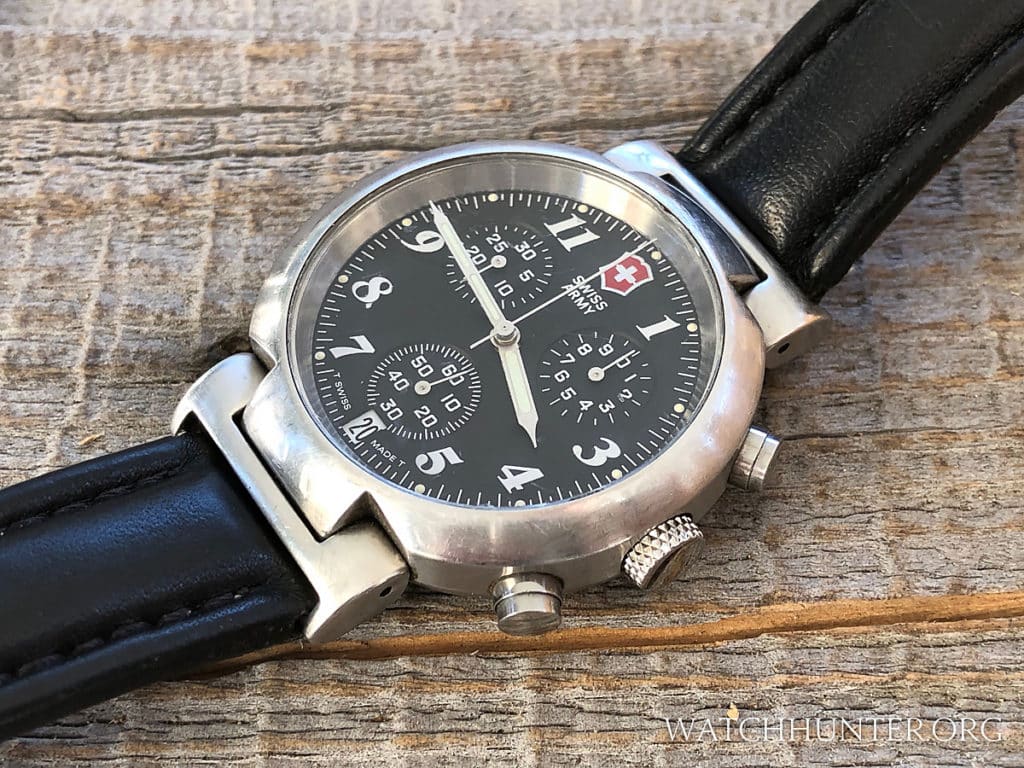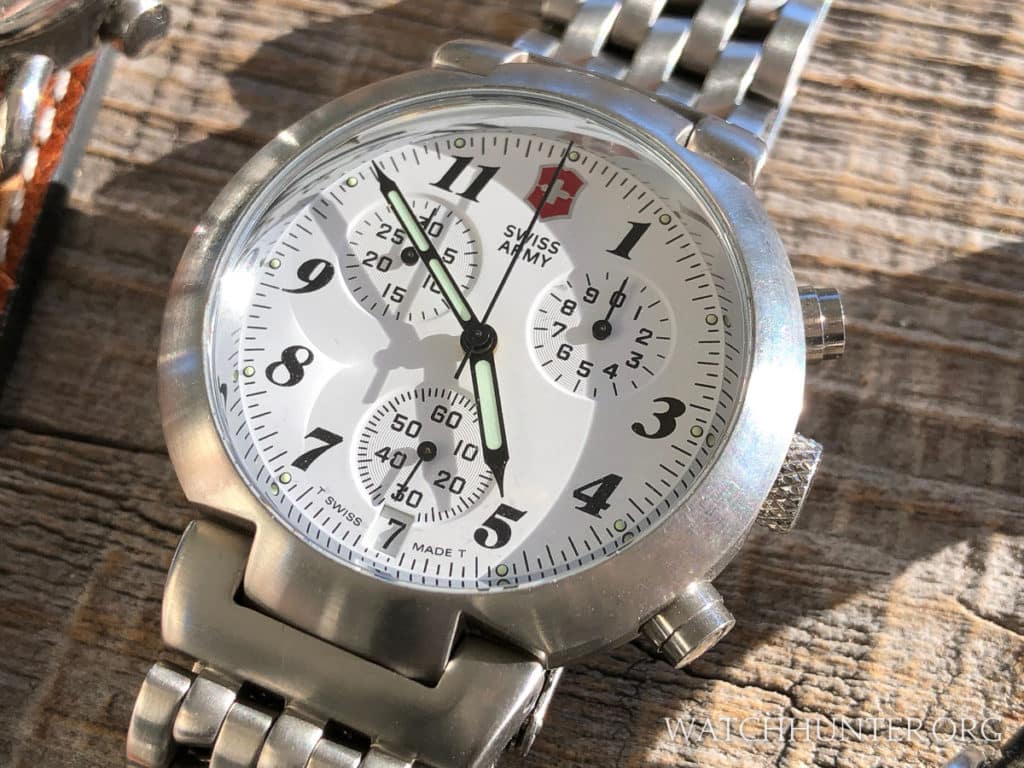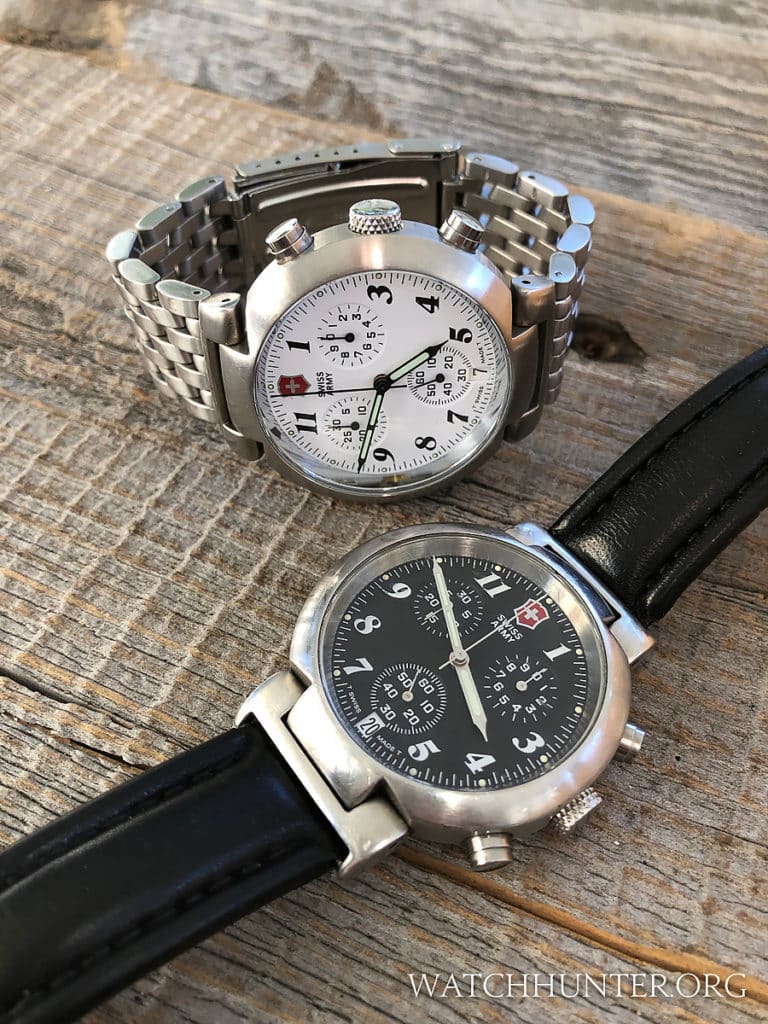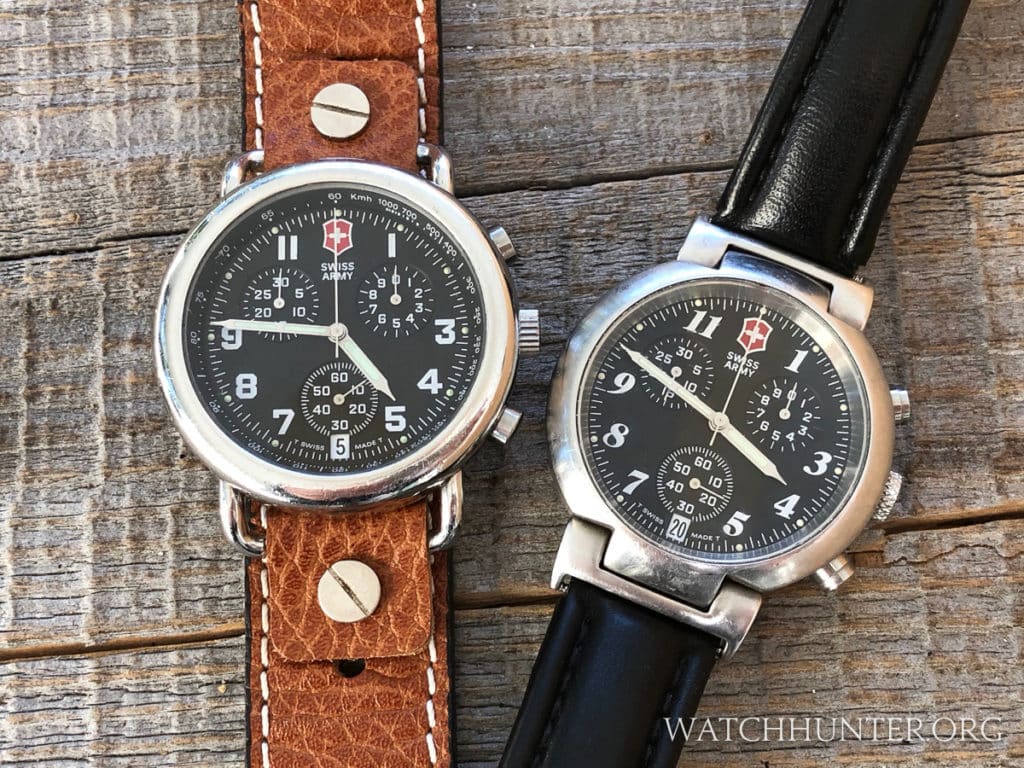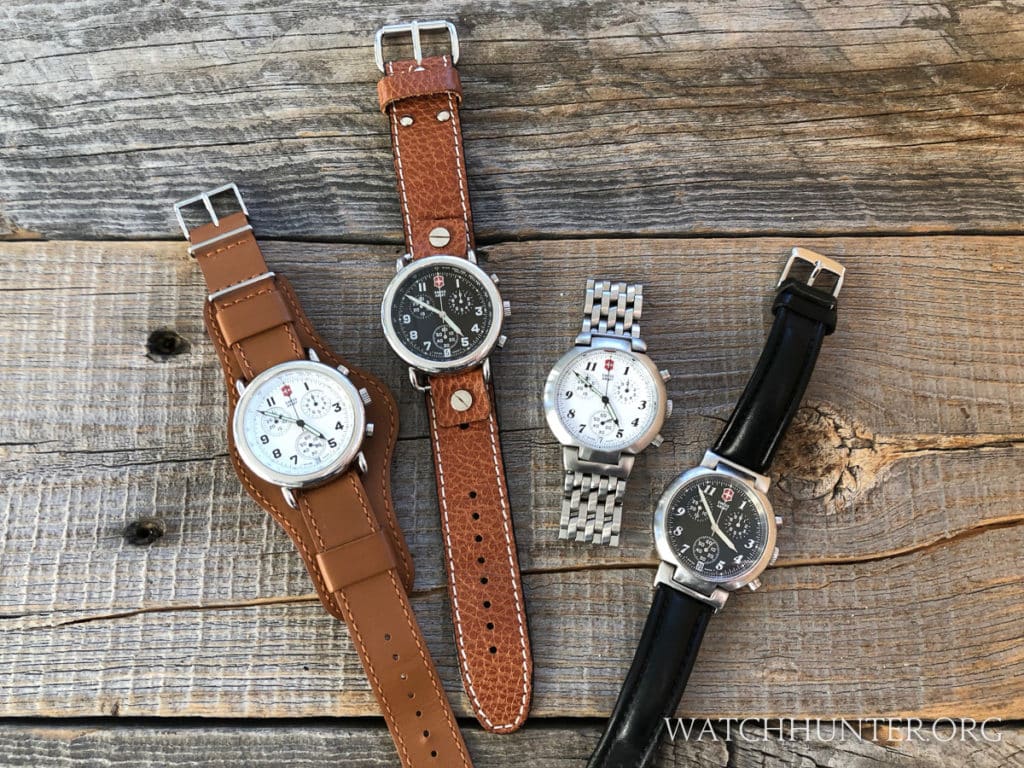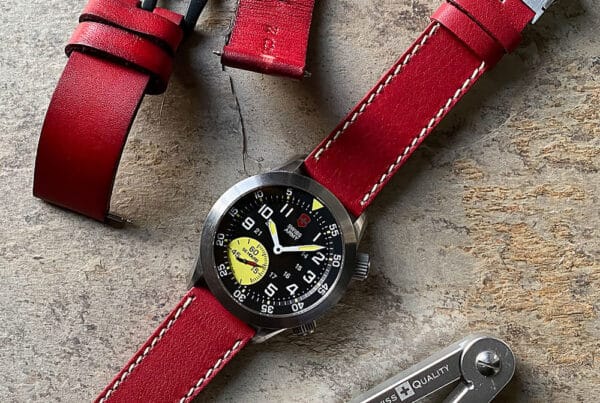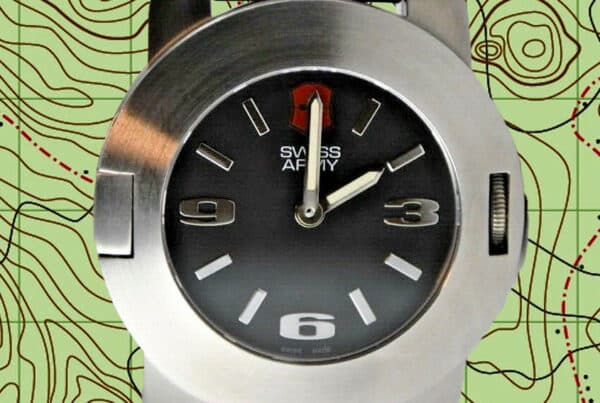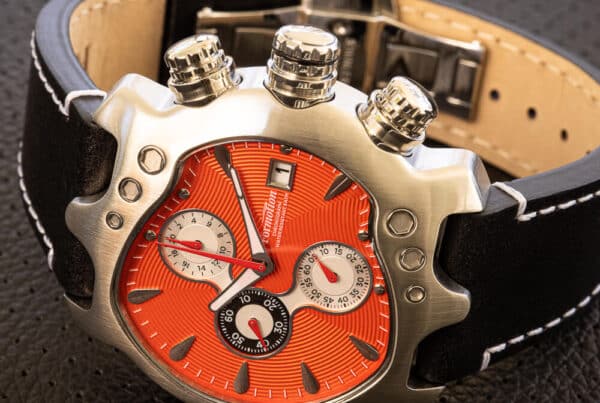When I first started writing this article about the wonderful vintage Swiss Army Cavalry Chronograph watches by Victorinox, I had visions of old-timey U.S. Cavalry charges, dust clouds, rattling sabers, bugles, and horses galloping as I remembered from the Westerns that played all weekend on the television programming of my youth. Just imagine how history might have been different for Lieutenant Colonel Custer with such a timepiece and less arrogance. He might have known that it was time to retreat before Geronimo’s forces destroyed him and his army.
Of course, I am being facetious because this watch (or any watch) by Victorinox Swiss Army could not have existed in 1876 when the Battle of Little Bighorn happened. Back in those days, large mechanical pocket watches like the American made Waltham 57 were the method of timekeeping.
Trench Watch Style
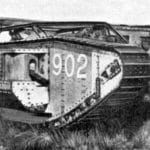 Regardless, it makes me wonder why Victorinox Swiss Army used the name Cavalry Chrono for these watches. Perhaps it had nothing to do with the American frontier and had more to do with the time period around the first World War. That was an era when equine cavalry was being phased out for mechanical replacements like trucks and tanks. If we look at the watch in this context, its name might start to make more sense. Not only was warfare changing rapidly, but the technologies that we take for granted today were being pushed by man’s desire to kill as many of the enemies as possible and survive. Inventions of the era included the airplane, motorized vehicles, machine guns, poison gas weapons, telephones, and even mass-produced wristwatches.
Regardless, it makes me wonder why Victorinox Swiss Army used the name Cavalry Chrono for these watches. Perhaps it had nothing to do with the American frontier and had more to do with the time period around the first World War. That was an era when equine cavalry was being phased out for mechanical replacements like trucks and tanks. If we look at the watch in this context, its name might start to make more sense. Not only was warfare changing rapidly, but the technologies that we take for granted today were being pushed by man’s desire to kill as many of the enemies as possible and survive. Inventions of the era included the airplane, motorized vehicles, machine guns, poison gas weapons, telephones, and even mass-produced wristwatches.
 It is hard to imagine, but in those days, wristwatches (aka wristlets) were considered something for women to wear while men favored a pocket watch. However, there is nothing like the enemy shooting at you to help you adopt a good idea, no matter if it was considered “unmanly”.
It is hard to imagine, but in those days, wristwatches (aka wristlets) were considered something for women to wear while men favored a pocket watch. However, there is nothing like the enemy shooting at you to help you adopt a good idea, no matter if it was considered “unmanly”.
Officers of the era started wearing wristwatches and accurate timing devices became important to synchronize military actions over immense front lines that stretched for hundreds of miles. Wristwatches were another tool in the game of life an death on the battlefield. I invite you to learn more by reading an excellent article about the “Great War Trench Watches” by David Boettcher.
I am mentioning World War I history to provide a background for the Swiss Army Cavalry watches in this article. I believe that they take inspiration from early wristwatches, which are sometimes referred to as trench watches. True historians and watch aficionados may take issue with comparing a somewhat modern quartz watch to mechanical timepieces of over a century ago, and I would have to agree that it is not an apples-to-apples comparison.
Instead, I am suggesting that the Swiss Army designers took style cues from a bygone era and reappropriated them into a modern watch called the Cavalry Chronograph. Swiss Army is not the only one to do this as many famous watch brands look backward at historical watch designs from their own back catalog. Longines and Zenith, are just two watch manufacturers who are mining this time period for horological gold.
Overview of Earlier Swiss Army Cavalry Watches
The Swiss Army Cavalry Chronographs were not the first of the Cavalry line of watches. The popular three-handed predecessors called Swiss Army Cavalry watches established much of the design language for the first generation Cavalry Chronos. The chronographs were a great way to create a “line extension” for an existing popular watch. This is a fairly common practice in the retail industry where retailers build related products that feel similar but “speak” to different types of consumers. Creating the chronograph version of the classic Swiss Army Cavalry allowed the designers to expand the idea of a trench watch into a more complex timepiece.
There were two generations of Swiss Army Cavalry Chronos, and each generation had two watches. If you are keeping track, that is four watches in total. The watches were kept to the most basic watch dial colors of black and white. You really cannot go wrong with the standards as these color practically match anything you wear. Judging from the family group photo above, these watches shared strong design characteristics that absolutely identify these watches as part of the Cavalry family. Even as the case construction was modified on the second generation, all the watches look like they came from the same mold.
As the saying goes, we should start at the beginning. That means quickly touching base with the original Swiss Army Cavalry watch. These alpha models established many of the familiar traits seen in the first generation Swiss Army Cavalry Chronos. Looking at the case, you can tell right away that Cavalry watches were designed to invoke a different time period. The case is rounded like a river stone, almost like a pocket watch might appear. The faux wire lugs look like they are soldered onto the case, which was a common feature on early wristwatches.
In fact, many early wristwatches were small pocket watches that had wire lugs attached to them. This is different from most of today’s watches that have the lugs milled from the same block of steel as the rest of the watch case. This is the greatest evidence that I have that the Swiss Army Cavalry watches are designed to look nostalgic. Even though the lugs appear to be wire lugs, they work just like a typical set of lugs that use spring bars to attach the leather strap to the case. The strap hides the spring bars creating the perfect illusion that your watch uses old fashioned wire lugs.
The numerals used on the dial were hand drawn and are an interesting mix of old and new. They are not borrowed from a 1917 watch dial, but they do have a certain military stenciled appearance. They are blocky, geometric and very legible. The second track of small red numbers completes the 24-hour scale, a standard feature on many early Swiss Army watches. Even the logo has the name “Army” in it! One cannot help but imagine that a soldier could wear these watches into battle.
The First Generation Swiss Army Cavalry Chronos (1998)
It is almost easy to imagine the designer’s thought process and how the first generation Cavalry Chronos came to be. The design of the familiar 41 mm Cavalry watch case was used, but a chronograph movement replaced the 3-hand movement. This seemingly simple change of caliber set off a chain reaction of that altered the look of the watch. Obviously, the case grew pushers since the user would need buttons to start, stop and reset the chronograph.
All watch movements have “hard points” that a designer has to work around. These specifications usually tell the designer exactly where the centers of the subdials will appear. As you can see below, adding the subdials necessitated that the 2, 6 and 10 be removed from the dial. It is usually cleaner to completely remove the numbers than to leave slivers of them. Luckily, that is the case on the first generation Cavalry dials.
The subdial configuration is typical for ETA G10.211 quartz movements. The 30-minute subdial is located in the 10:00 spot and the 1/10th-of-a-second subdial is located in the 2:00 spot. The running-seconds-hand that continuously ticks whether the chronograph is running is located at the 6:00 spot. This is to let the user know that the watch is functioning in lieu of a central ticking seconds hand. There is a central seconds hand for the chronograph function, but that only works when the chronograph is used.
An outer tachymeter scale is located on a slanted rehaute that serves as a visual bridge between the case and the dial. The tachymeter scale is there if you need it, but it is designed to be a second layer of information. It never gets in the way of telling the time or using the chronograph, which would be considered the primary functions of the watch. There is a kind of balancing act that the watch designer must attempt. Too much detail can make a dial unreadable. Too little detail and the design could be viewed as boring. I’d say that Swiss Army got this one right.
If you look closely at the typography used on the dial’s main numerals and also the numbers in the subdial, you will notice that they perfectly match. That is because this is custom, hand-drawn typography. You may not notice this level of detail without a loupe, but your brain registers a cohesive design. The parts fit together and just look right. Anyone who has seen crazy sets of fonts on a watch dial that fight with each other knows what I am talking about.
You might notice the words “T SWISS MADE T” on the lower part of the dial. This marking indicates that the watch used tritium as the luminescent agent. This slightly radioactive material is safer than toxic radium, but it will eventually grow dim. Mine is still glowing decently. The tritium paint would have been used on the semi-syringe style hands, and there are small round tritium pips outboard of the large numerals.
There was a black and a white version of the first generation Victorinox Swiss Army Cavalry Chronos. At first glance, they seem to be polar opposites almost exactly flipping black for white between the models. But closer inspection reveals that there are minor differences between them. Both models have a white date disk, but the effect is different for each dial. On the white dial, the date window disappears, and on the black dial, the white date wheel almost acts like a 6:00 marker. Clever.
The handsets are similar shapes on both watches, but the black dial variant (24345) had a stainless steel finish. The hands on the white dial version (24344) are painted black for maximum contrast against the background. This is a good solution because sometimes silver hands are used over a white dial (on other watches), which can reduce legibility.
Both watches have slightly sunken subdials with circular patterns that can best be seen when light rakes across the dial. The subdials on the black watch could be considered subtle. The subdials on the white Cavalry Chrono are a different proposition because the edges of each subdial are ringed with a mirror edge of polished stainless steel. At first, I thought that this was a microscopic chrome ring, but I believe that it is actually a small sliver of the dial surface that has not been painted. Based on the magnificent shine radiating from it, perhaps the dial was plated and polished before it was painted. Whatever the manufacturing technique was, the results make the white dial appear more upscale. This is the only model that has this embellishment so I think it is the top one to seek as a collector.
The original Swiss Army Cavalry Chronos are strap monsters. The faux wire lugs practically beg the owner to try a variety of straps. From nylon NATOs to two-piece leather straps, the options are unlimited. To reinforce the vintage styling of the Cavalry Chronos, I decided to use bund-style leather straps. Bund straps might be as old as the trench watch concept, but they really came into use by pilots of World War II. They still have an old fashioned early twentieth century look to them so they are my choice to increase the appearance of antiquity. For the white dial, I stayed within the Victorinox Swiss Army product line by using a bund strap that appeared on a Swiss Army Original Chronograph Limited Edition watch. It’s a perfect match for me.
I installed a different type of pilot strap on the black dial variant. Some military watches did not have removable spring bars and they had solid end links. That means that specialized straps such as NATOs or the leather strap variation (seen above) were used. A small fold of leather looped through the faux wire links and this loop was attached by a screw. Using this type of strap enhances the illusion that the faux wire lugs on the Swiss Army Cavalry Chronos are solid because it hides the secret spring bars.
Swiss Army Cavalry Chrono II (2000)
If the first generation of Swiss Army Cavalry Chronos were supposed to feel like World War I trench watches, the second generation deviated from that path and stylistically jumped many years into the future. It’s debatable whether this next-gen watch should be considered an evolution or a revolution. In some ways, these watches are undeniably related, but in other ways, they are a complete departure. I think that most people say that these watches look similar enough to see a family resemblance so we will have to look closely to see the nuances.
One detail is obvious from the start. The updated case is significantly different in shape, and it was reduced by 2 mm from 41 mm to 39 mm. The smooth polished edges from the original were replaced with a more geometric case. Where the first-gen case side has a smooth rounded appearance, the second-gen has a distinct top slope, middle straight-edge flank, and a back slope. The finish is also different. The polishing on the cases was replaced with a satin brush that seems to match the slightly more industrial style of the watch.
Also, the faux wire lugs of the first models were replaced with an integrated end link bracelet or strap design. This fundamentally changes one aspect that watch collectors care about. The second generation Swiss Army Cavalry Chronos are NOT strap monsters. You will be hard pressed to use any bracelets besides the ones that came with the watches. It might be possible to fit a new leather strap to the integrated end link, but not all straps will fit. If you like the look of the inverse lugs, then this is no problem. However, if you like to customize your watches with strap changes, then consider buying the first generation instead.
I don’t believe that earlier Swiss Army Cavalry 3-hand watches came with a bracelet so this appears to be a break from the practice of providing only leather straps for Cavalry models. Some would argue that a bracelet has upmarket appeal, and that is true. Others might argue that buying a watch with a custom end link that only accepts factory straps might be risky to buy. If the original strap or bracelet breaks, you might not be able to find an OEM replacement. Victorinox Swiss Army does not necessarily stock straps and bracelets for “vintage” models like these (but you could always ask Reflections of Infinity).
The biggest difference on the dials of the Cavalry Chrono II watches is that the large numerals changed from a blocky military-inspired font to a more classical serif font. The hand-drawn military fonts are still used on the subdials. I wonder what the inspiration for using an italic font was? I would suspect that Swiss Army used it because it was significantly different from the previous font. This could reinforce that this is indeed a newer model. It makes me wonder what these second-gen watches might have looked like if the main numerals had remained the same style as before.
Eagle-eyed readers might notice that there is a major omission from the front of the watch. The rehaute with the tachymeter scales have been removed on the later generation. This results in being able to see the inside walls of the watch case. This creates the appearance of greater depth in the watch. The black dial version has an inner case that appears to be brushed to match the outer case finish. The white dial version has a highly polished interior case that looks like a funhouse mirror because the concave surface creates distorted reflections of the dial. The white version does not have the chrome edges on the subdials, but the polished inner watch wall seems to have a similar effect on a larger scale.
The last features that changed on these later Swiss Army Cavalry Chronos can be found on the side of the watch. The crown sits lower near the case, and it has diamond-shaped knurling. The previous crown was taller and had traditional grooves cut into it. The pushers on the second-gen seem to have a slight stepped appearance as if a metal sleeve tube wraps the pusher button. Again, this looks more industrial than the original smooth pushers.
Conclusion
I have proverbially “beaten the horse to death” in this article, which might seem fitting for watches with the name Cavalry in them. I would like to strongly encourage anyone who is interested in modern watches with a”semi-historical” look to go forth and find your own. The Swiss Army Cavalry Chronos are cool models from the late-1990s/early-2000s and fulfill the grab-and-go ease of quartz watches. Everyone should have a few no-fuss timepieces, even fancy watch collectors. These Swiss Army watches would be perfect for those who like the look of antique watches, but the convenience and accuracy of modern ones. It has been a pleasure collecting all of the Swiss Army Cavalry Chronos. I wonder if anyone else has collected the full set. If so, send me a photo to post.


